Breadcrumb
Public Health in Uniform
Published on November 4, 2015
Alumni Frank Lisella and Scott Vial discuss their careers in the Public Health Service and U.S. Army
At first glance, public health and the uniformed services may not seem to have much in common. But keeping large numbers of people healthy in crowded and often challenging conditions is a vital task performed by military preventive medicine and federal agencies such as the CDC. Today, the Armed Forces have personnel devoted to identifying and resolving a wide range of chemical, physical, and environmental hazards to military personnel and civilians.
The U.S. Public Health Service Commissioned Corps (USPHS) is a uniformed service that falls under the leadership of the Assistant Secretary of Health and the Surgeon General within the Department of Health and Human Services The Public Health Service traces its history back more than 200 years to the U.S. Marine Hospital Service, which protected against the spread of disease from sailors returning from foreign ports and maintaining the health of immigrants entering the country.
Today, more than 6,500 Public Health Service officers serve in over 20 federal departments or agencies. They are involved in health care delivery to underserved and vulnerable populations, disease control and prevention, biomedical research, food and drug regulation, mental health and drug abuse services, and response efforts for natural and man-made disasters as an essential component of the largest public health program in the world.
Two College of Public Health alumni, Maj. Scott Vial (MS ’02), an Environmental Science Officer with the U.S. Army, and Dr. Frank Lisella (PhD ’70), who served 23 years with the Public Health Service, know firsthand the challenges and rewards of preventing illness and injury among populations in national and international settings. Both recently answered questions about their careers in uniform.
Frank Lisella, U.S. Public Health Service Commissioned Corps
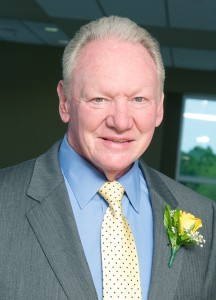
Frank Lisella received a PhD in Preventive Medicine and Environmental Health (now part of the College of Public Health) from the University of Iowa in 1970. His distinguished career in public health practice spans more than 50 years. In 1964, he began his career in the U.S. Public Health Service Commissioned Corps, retiring in 1987 with the rank of captain. During his years in the Public Health Service, he worked in many capacities, primarily at the Centers for Disease Control and Prevention (CDC) in Atlanta.
After retiring from the CDC, Lisella directed environmental health and safety programs at the Georgia Institute of Technology and Emory University. Since his retirement from Emory University, Lisella has continued to work as a health and safety consultant. He has authored numerous scientific papers and reports and has consulted for various organizations, including the Pan-American Health Organization and the World Health Organization.
Dr. Lisella recently answered questions about his professional background and work with the Public Health Service, including several memorable projects.
What drew you to join the U.S. Public Health Service Commissioned Corps?
During my early years as an employee of the Pennsylvania Department of Health, I came in contact with many individuals employed by the Public Health Service. Over time, I became more intrigued with the scope of programs these individuals represented both in the United States and globally. This piqued my interest and led to my investigating the opportunity to become a contributor to public health programs beyond the borders of Pennsylvania, my home state.
On November 22, 1963, I had an unannounced visit at my Harrisburg Office from two CDC employees, one of whom was stationed at a disease control project in Lebanon, Penn., which earlier was in my territory as an Environmental Health Specialist. We had a discussion about my training and military experience, which included time as a Navy corpsman and later as an Army Medical Service Corps commissioned officer. This visit culminated in an offer to apply for a commission in the Public Health Service. I later accepted that offer and began the processing for an assignment as a Disease Control Coordinator at the Hillsborough County Health Department (a CDC, PHS assignment) in Tampa, Fla.
The offer from the Public Health Service came at a tragic point in U.S. history (President Kennedy’s assassination), and I unknowingly began a career that would ultimately involve consulting on problems in 46 states and 6 foreign countries.
Likewise, what drew you to the program in Preventive Medicine and Environmental Health at the University of Iowa?
In the mid 1960s, the program I was assigned to at CDC was subjected to a major shift in responsibilities. Much of this momentum was due to the book by biologist Rachael Carson entitled Silent Spring and other publications that detailed abuses connected with the use of pesticides in the environment and their effects. This led to a restructuring of our program and transfer of the responsibilities for a major program in pesticides research and laboratory diagnostic technology from Washington, D.C. to Atlanta, Ga. (at CDC facilities).
Included in the program elements transferred were a series of epidemiologic studies on human exposure to pesticides. The program also established the need for training courses in the health aspects of pesticides and the epidemiology, diagnosis, and treatment of pesticide poisoning. I served as technical advisor on one of the training films and as co-advisor on others. We developed two training films in a relatively short period of time and ultimately received awards for these films from the National Safety Council. A five-day course in “Pesticides and Public Health” also was developed.
My focus from microbial agents to chemicals was shifting rapidly and created the need to expand my knowledge to include specialized studies in the epidemiology of pesticides and other chemicals in the environment, environmental toxicology, industrial hygiene, and injury control, particularly as related to the agricultural setting. Additional training in these areas, when coupled with the microbial-based Master’s program I had completed at Tulane University, would enhance my opportunities to make credible contributions in the chemical safety field.
After examining numerous graduate programs around the country, I decided that the University of Iowa program with faculty members like Dr. Keith Long and the late Dr. Earl Rose and many others would be a good choice for additional training, and I was admitted to the PhD program in Preventive Medicine and Environmental Health.
What are one or two of the most memorable or satisfying projects that you worked on while in the Public Health Service?
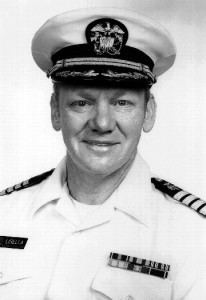
The following projects were carried out in the 1970s. However, they have relevance to today’s problems dealing with resettling refugees worldwide and with disarming and neutralizing weaponry. Their methodology and successes paved the way for addressing these problematic areas today.
Vietnamese Resettlement Program 1975
Our particular component at CDC became known as a “go to” group for a number of specific environmental areas. One of the specialty areas was providing environmental public health services at large gatherings of individuals, such as National Boy Scout jamborees, which typically had about 28,000 scouts and adults encamped for a 7- to 10-day period. These encampments were held in Valley Forge Park and Moraine State Park in Pennsylvania and at Fort A.P. Hill in Virginia.
It was then no surprise when we were asked to produce staff to assist with the Vietnamese Resettlement Program at Camp Pendleton in California, Eglin Air Force Base in Florida, Fort Chafee in Arkansas, and Fort Indiantown Gap in Pennsylvania.
In mid-April of 1975, four of us were summoned to the Office of the Director of CDC and given a briefing on the planned operation. We were told to be on a plane to San Diego by 7 p.m. that evening and to plan on being gone for several weeks. Our job was to provide assistance to the U.S. Navy and Marines on all issues related to settlement, including housing, food service operations, disease control monitoring, and preventive health operations, such as X-ray screening and specific immunization requests.
We met with the Commanding Officer of the U.S. Naval Hospital early the next morning and received more detailed information on the proposed operation. It was now Tuesday and the arrival of about 1,000 refugees was planned for Thursday. The Marine Corps had been working since Saturday and had a number of tents and Quonset huts prepared.
Although we had many concerns, the prevention of food-borne illnesses was at the top of the list. Since I had only one staff member to spare (who was still in Atlanta), I told our Navy contact we would need additional technical help to assist with food service inspections and reporting. Without hesitation, he assigned 14 senior corpsmen to assist with the job. Since the food service operations were serving both Vietnamese and American cuisine on a 24-hour basis, it was imperative to monitor all operations, including incoming food provisions carefully.
Each medical clinic area was contacted frequently and the daily logs of patient visits were reviewed. Symptoms such as nausea, diarrhea, vomiting, and general malaise among the refugees were analyzed and investigations conducted accordingly. For the most part, most of the illnesses seen were not attributed to any of the food service operations.
By the end of 1975, an estimated 50,400 refugees had processed through the Camp Pendleton facility. Other than minor problems associated with the trip from Vietnam to San Diego, there were no significant outbreaks of disease that could be attributed to the Camp Pendleton phase of the refugees processing. This was a source of much satisfaction to all of us who worked in this massive undertaking.
I returned to Atlanta when all the environmental programs were in place and functioning according to our plans. After a two-week respite, I was asked to travel to Fort Indiantown Gap, Penn., where I was detailed to the U.S. Army Environmental Hygiene garrison as a technical advisor. This particular installation had some housing facilities that had not been utilized since the Korean Conflict. In fact, many of the buildings that were constructed at the beginning of WWII were considered “temporary” in nature. The post and military cadre were activated because of a shortage of housing facilities at the other processing sites.
Working with the Army was a pleasure, since I knew several of the senior officers from past work experience. Basically, we followed the same environmental protocols that were in place at Camp Pendleton with a very successful outcome. The “Gap” was only used for a short time, knowing that with the approach of fall and winter, it would be very difficult to heat many of the structures.
Chemical Demilitarization
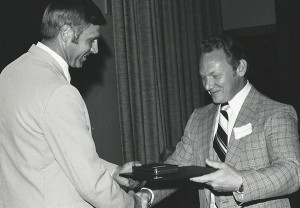
In the early years of WWII, bombs that incorporated a biological or chemical component as well as an explosive charge were part of the U.S. military armamentarium. These so-called “binary weapons” were stored at various military facilities. The biological weapons in the stockpile were destroyed after the close of WWII. The inventory remaining consisted of obsolete, leaking, or potentially damaged chemical weapons.
In 1978, the authority to work with the Defense Department on a program to oversee the health and safety concerns of the munitions in inventory was transferred to the CDC in Atlanta, Ga., and ultimately my branch. This transfer related to any of the weapons that were to be transported, disposed of, or open-air tested.
Depending up the types of bombs involved, the Defense Department would hire contractors who would prepare an “action plan.” This plan would be reviewed by my staff, who would monitor the entire protocol for handling these materials. If the bombs were to be “demilitarized,” a secure safety cabinet line would be established at the installation involved and the weapons, fuses, and explosive components removed. Some of these manipulations were performed robotically, others by trained explosive technicians. The chemical compounds were drained from the bombs and packaged for disposal as hazardous wastes. Any solutions used in the decontamination process were also collected and handled in a similar fashion. In some cases, the inventory was so large, specialized incinerators needed to be used.
This program was very interesting and satisfying to all of us involved. Any weapon removed from inventory could never be used to harm people, and fears associated with occupational exposure by those performing inventories in the bunkers where these materials were stored were minimized.
This program continues today, based on current needs.
What advice do you have for students thinking about joining the Public Health Service?
The Public Health Service has a long and distinguished history of service to this country. The PHS provides opportunities for service to humanity in a scope that is unique and very broad. There are careers for a number of different skills, expertise, and training.
Those interested should be aware that the Public Health Service is one of the Uniformed Services, particularly with respect to assignments, compensation, promotions, and retirement benefits.
Center photo courtesy of the CDC.
Bottom photo courtesy of Frank Lisella.
————————————————————————————————————————————————
Scott Vial, Environmental Science Officer, U.S. Army
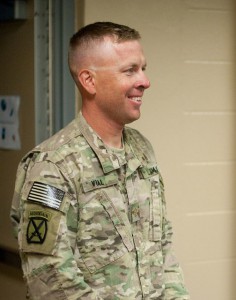
Major Scott Vial is an Environmental Science Officer with the 14th Combat Support Hospital in Fort Benning, Ga. He earned an MS degree in epidemiology in 2002 from the University of Iowa College of Public Health. His military career has taken him around the globe, including deployments in Honduras, Afghanistan, and Iraq. Maj. Vial recently discussed his career, the scope of military preventive medicine, and how his training has prepared him to lead efforts that prevent disease and injury at home and abroad.
Can you provide an overview of your career trajectory and how long you’ve been with the Army?
I joined the Army Reserve in 1997 during my freshman year at Luther College in Decorah, Iowa. I served as a generator mechanic in the Reserve for five years. I graduated from Luther with my BA in Biology in December 2000 and immediately began studying at the University of Iowa College of Public Health in the spring of 2001.
I began contemplating life after graduate school and finding a job, in particular. I ended up contacting an Army Medical Department recruiter and completed a direct commissioning packet in August 2001. I received my commission as an Environmental Science Officer in the rank of 2nd Lieutenant in December 2001. During the interim, of course, the 9/11 attacks occurred and really cemented my decision to come on active duty and continue serving as an Army Officer.
Since coming on active duty I’ve held a number of positions of increasing responsibility. I’ve done two stints at the Army Public Health Center working as a project officer and also as the Chief of Field Preventive Medicine training Preventive Medicine units for deployment to Iraq and Afghanistan. I’ve also served in a number of field units at the brigade, division, and corps levels.
My last assignment was as the commander of the 926th Medical Detachment (Preventive Medicine) at Fort Benning, Ga. I took command of the 926th in July 2013. Just 88 days later we deployed to Afghanistan in October 2013 and spent the next nine months providing preventive medicine support to over 54,000 service members, Department of Defense civilians, contractors, and multinational partners across the country.
I relinquished command of 926th in June 2015 and am currently serving as the 14th Combat Support Hospital’s adjutant or personnel officer. I’ll stay in this career broadening position for about a year before going back to school for a PhD. The Army notified me over the summer that I was selected to attend a PhD program at a school of my choice through their Long Term Health Education and Training program.
The focus of your unit is preventive medicine. Can you explain broadly what that entails?
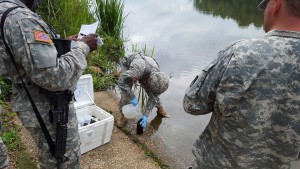
Military preventive medicine primarily deals with sustaining the mission readiness of our personnel through the prevention of disease and injury. We’re trained and equipped to conduct a wide variety of preventive medicine tasks. Most of these tasks are focused on occupational and environmental health. We look at how the workplace or the environment can negatively impact the readiness of our personnel by causing disease or injury.
When we’re deployed we’re trained to anticipate and recognize a variety of health threats, including food and waterborne disease, noise, chemical exposures, arthropods and rodents, hot and cold weather injuries, waste management problems, poor air quality, and general sanitation, to name a few.
When we identify a potential hazard we work with commanders and leaders to develop workable solutions and controls to the issue. After the controls are in place we typically come back and validate the controls’ effectiveness.
How has your epidemiology training helped prepare you for your work?
I think my epidemiology training at Iowa prepared me for my career in two ways. First, I came out of Iowa with a great understanding of the epidemiological triangle (host, agent, and environment). Armed with this general concept and some specific information about the host, agent, and environment, I can protect the health of the force by developing controls to break the chain and prevent disease or injury.
Second, studying epidemiology sharpened my critical thinking skills. I learned to how to make good observations and to develop and test hypotheses. As an officer we’re expected to be critical thinkers. My time at Iowa was invaluable in learning how to critically think about and analyze public health challenges.
One goal of your work is to keep military personnel healthy; does your unit also address the health of civilian populations, and if so, in what ways?
I frequently describe the Army’s 12-person preventive medicine detachments as the Army’s version of a civilian city or county environmental health department. We’re trained and equipped to do virtually every task that a typical environmental health department would.
During garrison operations we provide a range of preventive medicine support to the local installation and community. At Fort Benning we serve a population of about 100,000 soldiers, family members, retirees, and contractors. The support we provide includes food service sanitation inspections, barber and beauty shop inspections, gym inspections, entomological surveys, and environmental monitoring. We’re also capable of conducting epidemiological investigations, but most of our energy is aimed at preventing outbreaks vs. investigating them.
Is there anything else you’d like to add about the role of public health in the military – any aspects or responsibilities most civilians may not think about or realize?
I think most people are initially surprised to learn that the Army maintains a public health capability. Most people think that the Army is just infantry, tanks, and helicopters when they think of the military. Most would also recognize the importance of our medics and surgeons in saving the wounded as well. Public health is much lesser known.
However, when they really begin thinking about it, most people begin to realize how important public health is to ensuring that our troops are ready to fight and win. Historically, more troops have been lost to disease and nonbattle injury than have been killed in battles.
Our preventive medicine personnel are well trained and can identify health threats that soldiers and leaders might be overlooking. We can help them identify the threat, its potential impact, and develop controls to mitigate the threat.
It’s also worth noting that while we’re preventive medicine personnel, we are still soldiers first. We still conduct all sorts of military specific training to ensure that we can shoot, move, and communicate across a battlefield. This training includes marksmanship, convoy training, and, of course, plenty of physical training.
Top photo courtesy of Fort Benning Digital Archive. Photo by Patrick A. Albright/MCoE PAO Photographer.
Center photo courtesy of the 926 Medical Detachment Facebook page.